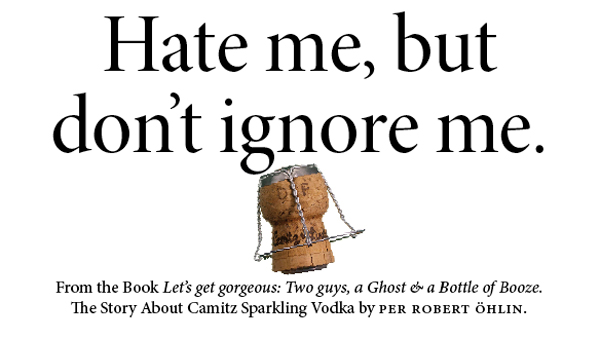 In the topsy-turvy world of the advertising industry, it is better to be hated than to be overlooked. This little philosophy is built on the simple logic that hate is made up of strong and genuine feelings while indifference is not made up of any feelings at all.
In the topsy-turvy world of the advertising industry, it is better to be hated than to be overlooked. This little philosophy is built on the simple logic that hate is made up of strong and genuine feelings while indifference is not made up of any feelings at all.
It means that there is a huge distance between you and the apathetic, like fierce rivals can actually become close friends through the sharing of certain experiences. This band becomes even more apparent when an additional rival turns up and threatens them both.
It is essentially crucial to know whether your consumer loves, hates or is bored by the presence of your product and its category. Ask yourself what it is that characterises her buying decision within your particular category.
Is it fear?
Is it hope?
Is it more to add a little spice to the humdrum of her existence?
Or is it characterised by pure apathy?
Imagine two axes: The first is swinging between low involvement and high-involvement; the second between zero relationship and vital relationship. This gives us four different categories of buying decisions:
1. Risk.
This applies to purchases requiring substantial investment, which means that the consumer runs of losing something – money, status or work. Some would like to believe that it is all down to a rational decision, but we now know that humans have no downright rational functions in the brain. It is this type of decision that makes the consumer defensive due to a strong feeling, namely the fear of losing. Consequently the decision takes a while longer to make, and the consumer usually seeks information from more sources before reaching the decision to buy.
The aim is to make her feel secure and to give a winning argument for her decision to buy. It is also important that she feels smart, and that you help her rationalise and verbalize her choice to others.
2. Routine.
Here we are talking about defensive low-involvement products. It is a choice that the consumer does not really relish making, as they are too boring. She can’t be bothered making a stand on all these small and meaningless decisions, so she decides one time and then just follows a routine. The choice is characterised by security. She knows what she is going to get so why take a chance on something new and unknown? It doesn’t carry any great significance, so why bother?
The challenge is to break the behavioural pattern. The most usual way is to give samples and discounts. Another way is to build a personality.
3. Spice.
This deals with brands that the consumer chooses to decorate her life with in order to add a little style and zest, for example products in the categories of ice cream, soft drinks and entertainment. We can also include durable goods that have been heavily discounted like a flat-screen TV.
The psychological driving force is the question of which brand provides the consumer most value. The choice is governed by short-term pleasure and satisfaction. The price is more often that not no great obstacle as most of the products in this category are prone to fierce competition. The task is to get the consumer to lust after the product and want it here and now. In order to succeed, you need an extremely low-price or considerable originality and feeling.
4. Hope.
Now we are talking about brands that are significant to the consumer. These are brands that the consumer kidnaps for her own use: house, watch, car, clothes, travel, perfume, accessories to name but a few. The choice is based on the image the consumer wants to create for herself. “Which image best fits with the manuscript of my life?”
The challenge is to create a cult status. To transform the brand into a so-called lovemark, a relationship that creates loyalty beyond reason.
So where does Camitz Sparkling fit in?
It is without doubt an offensive choice and an extremely conscious purchase that is driven by personal identification. It is a lifestyle brand, a marker for who you are.
One question remains though: How can this be communicated?
Read the next chapter on Mine goes to eleven, September 10: “Kill the adjectives.”
_
The lesson from Let’s get gorgeous:
- Chapter 1: The idiot’s guide to marketing (incl. introduction) | Mine Goes To Eleven
- Chapter 2: Not nice. Gorgeous. | The Brand-Man
- Chapter 3: The old, bearded Greek. | Mine Goes To Eleven
- Chapter 4: Spock vs. Gump. | The Brand-Man
- Chapter 5: Fuck the USP. Think ASP. | Mine Goes To Eleven
- Chapter 6: I’m Dirty Harry. Who are you? | The Brand-Man
- Chapter 7: When branding doesn’t work. | Mine Goes To Eleven
- Chapter 8: Hate me, but don’t ignore me. | The Brand-Man
Lämna ett svar